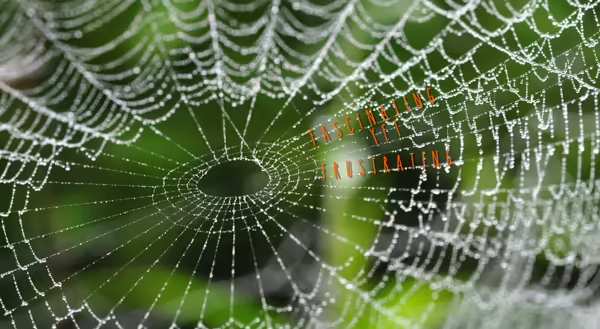
Written by Rhonda Ferree, retired horticulture educator
I have a love-hate relationship with spiders. I am continually fascinated when watching a spider spin its web. However, cleaning up cobwebs can be very frustrating.
Spiders are abundant (over 1,000,000 individuals per acre in a grassy field) and can be found almost anywhere from the bedroom closet to the 22,000-foot level on Mt. Everest. They are beneficial, feeding mostly on small insects and other arthropods.
Not all spiders use webs. Some trap their prey in webs or snares, while others are active hunters that use excellent vision to stalk or ambush their food. Virtually all spiders have poison glands that connect with the fangs. The venom produced by the glands is used to kill or paralyze prey and in defense. Only a few species, such as the black widow and the brown recluse, have venom that is very toxic or harmful to humans. However, some spiders do have a painful bite, and individual sensitivity to spider bites varies.
Spiders are categorized by their type. Orb weavers make classic orb webs made famous by the
book Charlotte's Web. A common one found in gardens is the Black and Yellow Argiope. Its web is very interesting because it usually has crossed zigzag bands across one end. The large, black and yellow spider hangs head down in the center of the web.
The cobweb spiders have irregular and messy webs. Household spiders that spin cobwebs are usually found in secluded areas in and around the home. These spiders feed on other spiders and insects, including such household pests as flies and moths. The more insects there are inside the home, the more likely spiders will live there.
Wandering spiders do not make webs to catch prey. Instead, they hunt down their prey, then use silk to protect their eggs and make retreats. Wolf spiders are a common example. Larger wolf spiders are often feared due to their large size (up to 1.2 inches) and hairy bodies.
There are also jumping spiders, crab spiders, ground spiders, and more.
By the way, garden daddy-long-leg spiders are not true spiders but rather a type of harvestmen. Harvestmen and spiders are both arachnids, but harvestmen have three body parts (spiders have two), two eyes (most spiders have eight), and no venom.
To manage household spiders, knock down webs with a broom or duster. Vacuuming works well too. Keep screens and other openings in good repair. Caulk all seams around windows and doors. If you must use a chemical spray, be sure it is labeled for household use to control spiders and follow directions carefully. Do not use outdoor labeled products inside your home!
The next time you accidentally walk into a spider web or watch one form on your front porch, remember that spiders vary greatly. Few creatures are quite as amazing, beautiful, and terrifying as the spider.
MEET THE AUTHOR
As horticulture educator, Rhonda Ferree inspired citizens in local communities to grow their own food and improve their home landscapes. She focused on high quality, impactful programs that taught homeowners how to create energy-efficient landscapes using sustainable practices that increase property values and help the environment.
After 30 years with University of Illinois Extension, Rhonda retired in 2018. She continues to share her passion for horticulture related topics as “Retro Rhonda” on social media.
ABOUT THE BLOG
ILRiverHort is a blog that helps people connect to nature and grow.